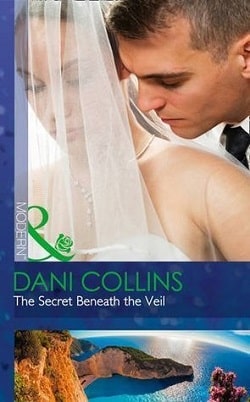“On the way?!” Sienna shook her head. “We’ll never get through the Porta Romana!”
“Stay here for thirty seconds,” he told her, “and then follow my lead.”
With that, Langdon slipped away, leaving his newfound friend bewildered and alone.
CHAPTER 21
“Scusi!” Robert Langdon chased after the group of students. “Scusate!”
They all turned, and Langdon made a show of glancing around like a lost tourist.
“Dov’è l’Istituto statale d’arte?” Langdon asked in broken Italian.
A tattooed kid puffed coolly on a cigarette and snidely replied, “Non parliamo italiano.” His accent was French.
One of the girls admonished her tattooed friend and politely pointed down the long wall toward the Porta Romana. “Più avanti, sempre dritto.”
Straight ahead, Langdon translated. “Grazie.”
On cue, Sienna emerged unseen from behind the Porta-Potty and walked over. The willowy thirty-two-year-old approached the group and Langdon placed a welcoming hand on her shoulder. “This is my sister, Sienna. She’s an art teacher.”
The tattooed kid muttered, “T-I-L-F,” and his male friends laughed.
Langdon ignored them. “We’re in Florence researching possible spots for a teaching year abroad. Can we walk in with you?”
“Ma certo,” the Italian girl said with a smile.
As the group migrated toward the police at the Porta Romana, Sienna fell into conversation with the students while Langdon merged to the middle of the group, slouching low, trying to stay out of sight.
Seek and ye shall find, Langdon thought, his pulse racing with excitement as he pictured the ten ditches of the Malebolge.
Catrovacer. These ten letters, Langdon had realized, stood at the core of one of the art world’s most enigmatic mysteries, a centuries-old puzzle that had never been solved. In 1563, these ten letters had been used to spell a message high on a wall inside Florence’s famed Palazzo Vecchio, painted some forty feet off the ground, barely visible without binoculars. It had remained hidden there in plain sight for centuries until the 1970s, when it was spotted by a now-famous art diagnostician, who had spent decades trying to uncover its meaning. Despite numerous theories, the significance of the message remains an enigma to this day.
For Langdon, the code felt like familiar ground—a safe harbor from this strange and churning sea. After all, art history and ancient secrets were far more Langdon’s realm than were biohazard tubes and gunfire.
Up ahead, additional police cars had begun streaming into the Porta Romana.
“Jesus,” the tattooed kid said. “Whoever they’re looking for must have done something terrible.”
The group arrived at the Art Institute’s main gate on the right, where a crowd of students had gathered to watch the action at the Porta Romana. The school’s minimum-wage security guard was halfheartedly glancing at student IDs as kids streamed in, but he was clearly more interested in what was happening with the police.
A loud screech of brakes echoed across the plaza as an all-too-familiar black van skidded into the Porta Romana.
Langdon didn’t need a second look.
Without a word, he and Sienna seized the moment, slipping through the gate with their new friends.
The entry road to the Istituto Statale d’Arte was startlingly beautiful, almost regal in appearance. Massive oak trees arched gently in from either side, creating a canopy that framed the distant building—a huge, faded yellow structure with a triple portico and an expansive oval lawn.
This building, Langdon knew, had been commissioned, like so many in this city, by the same illustrious dynasty that had dominated Florentine politics during the fifteenth, sixteenth, and seventeenth centuries.
The Medici.
The name alone had become a symbol of Florence. During its three-century reign, the royal house of Medici amassed unfathomable wealth and influence, producing four popes, two queens of France, and the largest financial institution in all of Europe. To this day, modern banks use the accounting method invented by the Medici—the dual-entry system of credits and debits.
The Medici’s greatest legacy, however, was not in finance or politics, but rather in art. Perhaps the most lavish patrons the art world has ever known, the Medici provided a generous stream of commissions that fueled the Renaissance. The list of luminaries receiving Medici patronage ranged from da Vinci to Galileo to Botticelli—the latter’s most famous painting, Birth of Venus, the result of a commission from Lorenzo de’ Medici, who requested a sexually provocative painting to hang over his cousin’s marital bed as a wedding gift.
Lorenzo de’ Medici—known in his day as Lorenzo the Magnificent on account of his benevolence—was an accomplished artist and poet in his own right and was said to have a superb eye. In 1489 Lorenzo took a liking to the work of a young Florentine sculptor and invited the boy to move into the Medici palace, where he could practice his craft surrounded by fine art, great poetry, and high culture. Under Medici tutelage, the adolescent boy flourished and eventually went on to carve two of the most celebrated sculptures in all of history—the Pietà and the David. Today we know him as Michelangelo—a creative giant who is sometimes called the Medici’s greatest gift to humankind.
Considering the Medici’s passion for art, Langdon imagined the family would be pleased to know that the building before him—originally built as the Medici’s primary horse stables—had been transformed into the vibrant Art Institute. This tranquil site that now inspired young artists had been specifically chosen for the Medici’s stables because of its proximity to one of the most beautiful riding areas in all of Florence.
The Boboli Gardens.
Langdon glanced to his left, where a forest of treetops could be seen over a high wall. The massive expanse of the Boboli Gardens was now a popular tourist attraction. Langdon had little doubt that if he and Sienna could gain entrance to the gardens, they could make their way across it, bypassing the Porta Romana undetected. After all, the gardens were vast and had no shortage of hiding places—forests, labyrinths, grottoes, nymphaea. More important, traversing the Boboli Gardens would eventually lead them to the Palazzo Pitti, the stone citadel that once housed the main seat of the Medici grand duchy, and whose 140 rooms remained one of Florence’s most frequented tourist attractions.
If we can reach the Palazzo Pitti, Langdon thought, the bridge to the old city is a stone’s throw away.
Langdon motioned as calmly as possible to the high wall that enclosed the gardens. “How do we get into the gardens?” he asked. “I’d love to show my sister before we tour the institute.”
The tattooed kid shook his head. “You can’t get into the gardens from here. The entrance is way over at Pitti Palace. You’d have to drive through Porta Romana and go around.”
“Bullshit,” Sienna blurted.
Everyone turned and stared at her, including Langdon.
“Come on,” she said, smirking coyly at the students as she stroked her blond ponytail. “You’re telling me you guys don’t sneak into the gardens to smoke weed and fool around?”
The kids all exchanged looks and then burst out laughing.
The guy with the tattoos now looked utterly smitten. “Ma’am, you should totally teach here.” He walked Sienna to the side of the building and pointed around the corner to a rear parking lot. “See that shed on the left? There’s an old platform behind it. Climb up on the roof, and you can jump down on the other side of the wall.”
Sienna was already on the move. She glanced back at Langdon with a patronizing smile. “Come on, brother Bob. Unless you’re too old to jump a fence?”
CHAPTER 22
The silver-haired woman in the van leaned her head against the bulletproof window and closed her eyes. She felt like the world was spinning beneath her. The drugs they’d given her made her feel ill.
I need medical attention, she thought.
Even so, the armed guard beside her had strict orders: her needs were to be ignored until their task had been successfully completed. From the sounds of chaos around her, it was clear that would be no time soon.
The dizziness was increasing now, and she was having trouble breathing. As she fought off a new wave of nausea, she wondered how life had managed to deliver her to this surreal crossroads. The answer was too complex to decipher in her current delirious state, but she had no doubt where it had all begun.
New York.
Two years ago.
She had flown to Manhattan from Geneva, where she was serving as the director of the World Health Organization, a highly coveted and prestigious post that she had held for nearly a decade. A specialist in communicable disease and the epidemiology of epidemics, she had been invited to the UN to deliver a lecture assessing the threat of pandemic disease in third-world countries. Her talk had been upbeat and reassuring, outlining several new early-detection systems and treatment plans devised by the World Health Organization and others. She had received a standing ovation.
Following the lecture, while she was in the hall talking to some lingering academics, a UN employee with a high-level diplomatic badge strode over and interrupted the conversation.
“Dr. Sinskey, we have just been contacted by the Council on Foreign Relations. There is someone there who would like to speak to you. A car is waiting outside.”
Puzzled and a bit unnerved, Dr. Elizabeth Sinskey excused herself and collected her overnight bag. As her limo raced up First Avenue, she began to feel strangely nervous.
The Council on Foreign Relations?
Elizabeth Sinskey, like most, had heard the rumors.
Founded in the 1920s as a private think tank, the CFR had among its past membership nearly every secretary of state, more than a half-dozen presidents, a majority of CIA chiefs, senators, judges, as well as dynastic legends with names like Morgan, Rothschild, and Rockefeller. The membership’s unparalleled collection of brainpower, political influence, and wealth had earned the Council on Foreign Relations the reputation of being “the most influential private club on earth.”
As director of the World Health Organization, Elizabeth was no stranger to rubbing shoulders with the big boys. Her long tenure at WHO, combined with her outspoken nature, had earned her a nod recently from a major newsmagazine that listed her among its twenty most influential people in the world. The Face of World Health, they had written beneath her photo, which Elizabeth found ironic considering she had been such a sick child.
Suffering from severe asthma by age six, she had been treated with a high dose of a promising new drug—the first of the world’s glucocorticoids, or steroid hormones—which had cured her asthma symptoms in miraculous fashion. Sadly, the drug’s unanticipated side effects had not emerged until years later when Sinskey passed through puberty … and yet never developed a menstrual cycle. She would never forget the dark moment in the doctor’s office, at nineteen, when she learned that the damage to her reproductive system was permanent.
Elizabeth Sinskey could never have children.
Time will heal the emptiness, her doctor assured, but the sadness and anger only grew inside her. Cruelly, the drugs that had robbed her of her ability to conceive a child had failed to rob her of her animal instincts to do so. For decades, she had battled her cravings to fulfill this impossible desire. Even now, at sixty-one years old, she still felt a pang of hollowness every time she saw a mother and infant.
“It’s just ahead, Dr. Sinskey,” the limo driver announced.
Elizabeth ran a quick brush through her long silver ringlets and checked her face in the mirror. Before she knew it, the car had stopped, and the driver was helping her out onto the sidewalk in an affluent section of Manhattan.
“I’ll wait here for you,” the driver said. “We can go straight to the airport when you’re ready.”
The New York headquarters of the Council on Foreign Relations was an unobtrusive neoclassical building on the corner of Park and Sixty-eighth that had once been the home of a Standard Oil tycoon. Its exterior blended seamlessly with the elegant landscape surrounding it, offering no hint of its unique purpose.
“Dr. Sinskey,” a portly female receptionist greeted her. “This way, please. He’s expecting you.”
Okay, but who is he? She followed the receptionist down a luxurious corridor to a closed door, on which the woman gave a quick knock before opening it and motioning for Elizabeth to enter.
She went in, and the door closed behind her.
The small, dark conference room was illuminated only by the glow of a video screen. In front of the screen, a very tall and lanky silhouette faced her. Though she couldn’t make out his face, she sensed power here.
“Dr. Sinskey,” the man’s sharp voice declared. “Thank you for joining me.” The man’s tautly precise accent suggested Elizabeth’s homeland of Switzerland, or perhaps Germany.
“Please sit,” he said, motioning to a chair near the front of the room.
No introductions? Elizabeth sat. The bizarre image being projected on the video screen did nothing to calm her nerves. What in the world?
“I was at your presentation this morning,” declared the silhouette. “I came a long distance to hear you speak. An impressive performance.”
“Thank you,” she replied.
“Might I also say you are much more beautiful than I imagined … despite your age and your myopic view of world health.”
Elizabeth felt her jaw drop. The comment was offensive in all kinds of ways. “Excuse me?” she demanded, peering into the darkness. “Who are you? And why have you called me here?”
“Pardon my failed attempt at humor,” the lanky shadow replied. “The image on the screen will explain why you’re here.”
Sinskey eyed the horrific visual—a painting depicting a vast sea of humanity, throngs of sickly people, all climbing over one another in a dense tangle of naked bodies.















